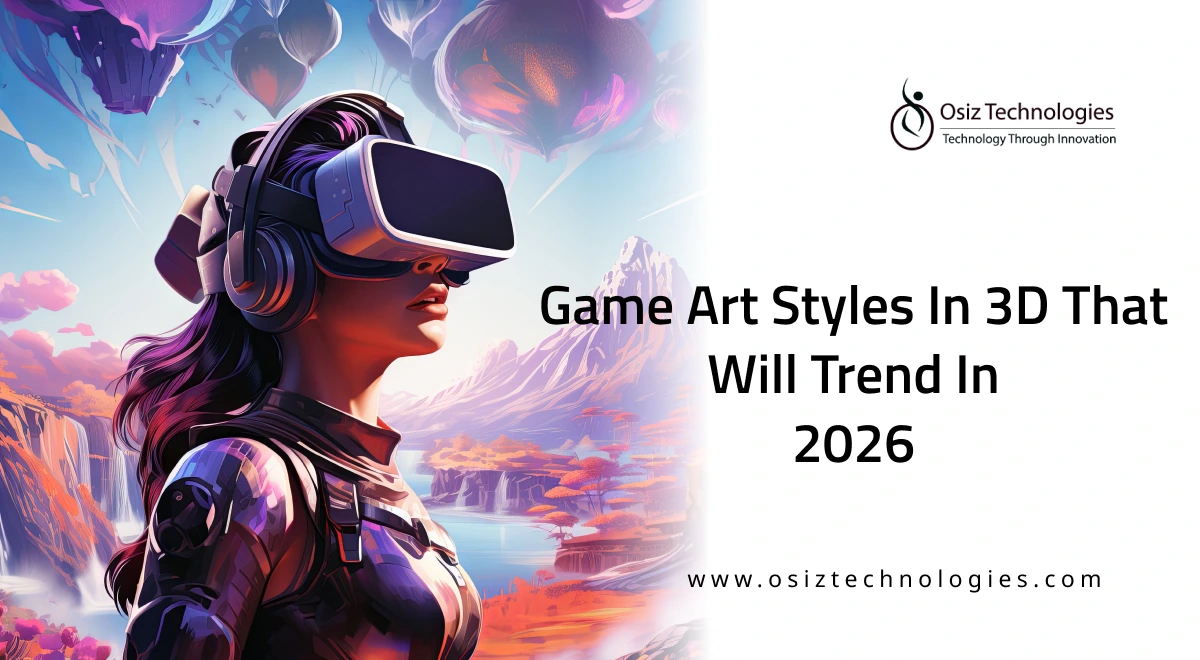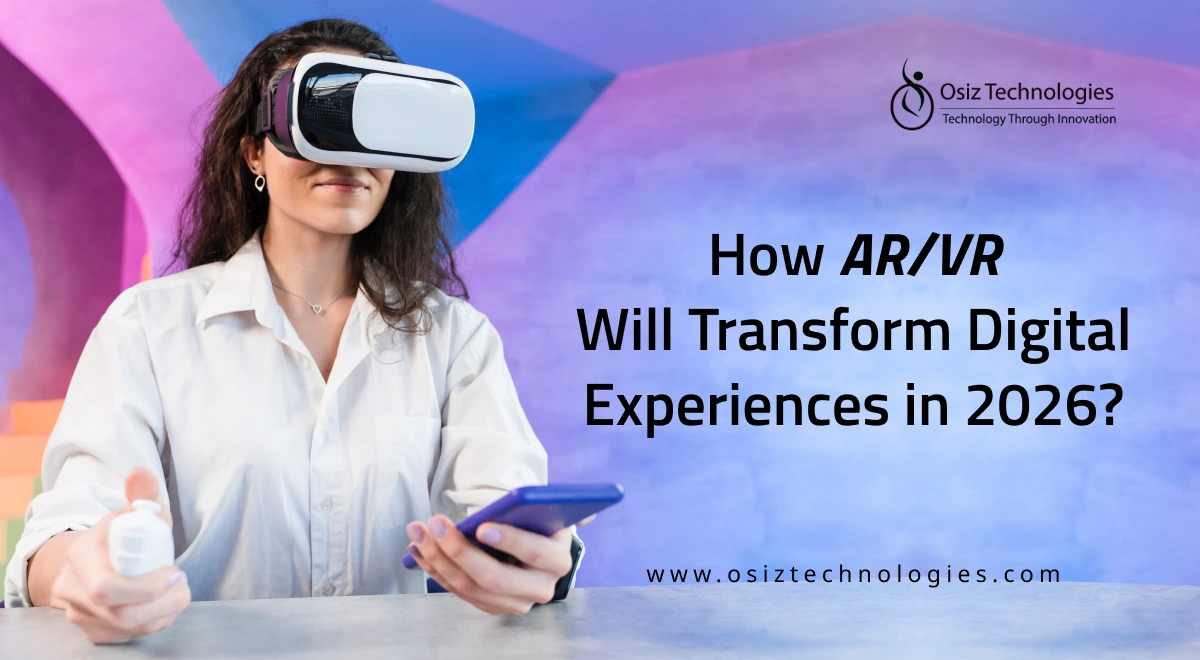The most essential factor in making the VR experience rich and interactive is content creation. However, creating high-quality VR content may prove cumbersome and sometimes even time-consuming, requiring large resources and expertise. Generative AI, being an important branch of artificial intelligence, has the potential to ease and accelerate quite a good number of facets of the VR content creation process. By using advanced algorithms and machine learning methodologies, generative AI can process large-scale datasets of pre-existing VR content, identify patterns, and then create new assets independently. This functionality not only increases the speed of content creation but lessens the workload on creators, thus allowing them to invest their time in other more strategic functions like conceptualization and storytelling. The following blog discusses how generative AI can transform virtual reality development through the creation of highly realistic, dynamic virtual environments.
How Gen AI Enhances Virtual Reality Development Processes
Virtual World Generation:
Generative models learn patterns and features from particular data in all types of environments. Very real virtual worlds can be created by showing highly detailed landscapes, cityscapes, interiors, and other immersive scene elements. The laws of physics are adhered to in the produced models, expressing natural phenomena that increase the level of realism in virtual experiences.
Asset Creation:
Generative algorithms learn data distributions for various asset categories and may create new and unique assets that are comparable to the training data. Such assets might include 3D models, textures, materials, and animations required for Virtual Reality. Since the models learn from existing data, they can project very realistic and very varied assets efficiently, hence streamlining the content creation process.
Integrating Multimodal Data:
Generative models are capable of integrating and learning from multiple types of data, including text, images, audio, and sensor inputs. Such integration will hence allow for the creation of comprehensive virtual experiences in which visual elements, audio cues, and physical simulations can be combined seamlessly to provide a more immersive and cohesive environment.
Personalized Content:
Generative models can leverage the data of users, manifested in their preferences, interests, and behavioral patterns, to provide them with a personalized experience in the virtual space. It offers to build specially tailored environments, narratives, or objects that are much more engaging and relevant to individual tastes and goals.
Compact Representations:
Generative models can capture heavy data in very compact representations or latent spaces. These forms allow for efficient storage, transmission, and generation of new instances from the original data. Therefore, this is a capability that becomes especially useful in virtual reality, where huge volumes of data need to be processed and rendered in real time.
Technological Framework for Expanding the Role of Generative AI in Virtual Reality Development
Generative Adversarial Networks (GANs):
GANs are the kind of deep learning model that comprises two neural networks: a generator and a discriminator. This generator generates artificial data, like images or 3D models, that replicate the real data from the training set, while the discriminator is trained to discriminate between real and artificial data. As such, the generator becomes very good at creating realistic and diverse outputs for this competition. GANs can be used in VR development for the generation of complex 3D models, textures, and environments, and also in realistic character animation and dynamic elements. This eradicates a significant part of asset creation that would have been done manually.
Variational Autoencoders (VAEs):
VAEs are methods that unite autoencoder methodologies with variational inference to provide an approximation to complex probability distributions. They consist of an encoder mapping input data into a lower-dimensional latent space and a decoder to reconstruct the original data from this latent space. VAEs play a very important role in VR for generating a multitude of variations of 3D models and environments by learning compact representations for these assets. It can also be applied in style transfer, using the visual style of one asset and applying it to another.
Diffusion Models:
Diffusion models generate outputs by gradually adding noise to an input (such as an image or 3D model) and then learning to reverse this process, thereby removing the noise to produce a new result. These models, trained on extensive datasets, can create high-quality outputs based on text prompts or rough sketches. In VR, diffusion models can generate photorealistic 3D models and environments from textual descriptions, enabling more intuitive content creation where developers can use natural language to describe desired elements.
Neural Radiance Fields (NeRFs):
Neural Radiance Fields (NeRFs) represent and render complex 3D scenes using neural networks. Instead of explicitly modeling geometry and materials, NeRFs encode scenes as continuous functions mapping spatial coordinates and viewing directions to radiance values (color and density). This approach allows for the creation of highly realistic and detailed virtual environments from images or 3D scans, capturing complex lighting, materials, and geometric details. NeRFs also enable dynamic camera perspectives within VR by rendering novel views of the scene.
Motion Capture and Retargeting:
Motion capture (mocap) is the process of recording the movements of actual actors or things and transferring that data into digital form, which is then utilized to animate virtual characters and objects. Retargeting adapts this motion data to different character rigs or skeletal structures, allowing for reuse across various virtual characters. In VR, motion capture data can be input to generative models like GANs or VAEs to create new animations or movements, with retargeting techniques applying these animations to different avatars or characters.
Natural Language Processing (NLP):
NLP mainly focuses on the interplay between computers and human language. NLP models enable intuitive and conversational user interfaces in VR environments. By integrating NLP with generative models, users can interact with and modify virtual worlds using natural language commands or descriptions. For instance, users can describe changes to the environment, and NLP, combined with generative models, will generate the corresponding modifications to 3D assets and environments. NLP also supports natural language-based interactions with virtual characters.
Reinforcement Learning:
Reinforcement Learning (RL) trains agents to make decisions and take actions within an environment to maximize rewards. In VR, RL can be used to train generative models to create dynamic and adaptive virtual worlds that evolve based on user interactions and feedback. The generative model acts as the agent, and the VR environment serves as the setting. By providing rewards for engaging experiences, the generative model learns to optimize and generate virtual content to enhance user satisfaction.
Game Engines and Rendering Pipelines:
Game engines—Unity and Unreal Engine foremost among them—form the core of VR experience development and deployment through their rendering pipelines. This is what empowers 3D graphics, physics simulation, and user input processing. Inside the realm of generative AI, game engines and rendering pipelines incorporate generative models that allow for real-time content generation and rendering within VR. They, therefore, further enable tools in content optimization, such as level-of-detail systems, lighting and material editors, and post-processing effects.
Final Thoughts
Generative AI in VR is a rapidly budding field that can change the meaning of content by dynamizing personalized experiences and pushing further the levels of realism and immersion. As the confluence of technology continues its march forward, this will become a cornerstone of how the future of VR will be—a new experience in applications like gaming, education, and training. Count on our VR development experience and a leading VR Development Company to integrate seamlessly into state-of-the-art VR solutions customized for your business. Reach out Osiz experts to start your transformative VR journey.
Listen To The Article
Recent Blogs

X-Mas 30%
Offer












